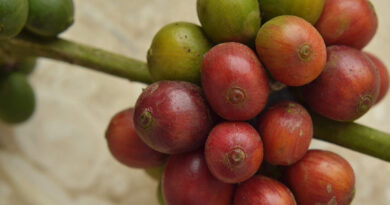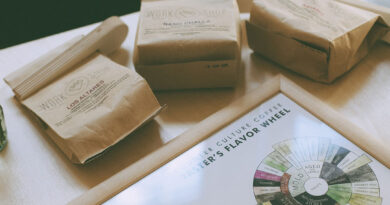History Of Coffee Packaging: Jute Bags And Transporting Coffee
Coffee packaging has evolved significantly throughout the years, from beeswax-treated sacks in the 1700s to impermeable flexible pouches today.
Its primary function has always been to transport coffee securely from point A to point B. However, as humans have gained more knowledge, an emphasis on maintaining freshness and avoiding exposure to external stimuli has resulted in increasingly inventive designs.
Packaging’s use as a marketing tool has also evolved. What started off as just functional has evolved into the “hidden salesperson,” a highly successful technique of marketing a brand’s identity to passers-by.
Continue reading to learn about the evolution of coffee packaging.
The first form of coffee packaging dates from the 700s through the 1860s.
Despite the fact that coffee was discovered around 850 AD, it wasn’t until the 18th century that what we now call “modern-day coffee packaging” began to appear.
The earliest known type of packaging is from 1720. According to Danielle Ohl, ground coffee in France was packaged in greased leather sacks or bags with beeswax exteriors around this time. In an article for Viking Masek, she argues that these were designed to “conserve flavor” and are commonly referred to as “the original form of the laminated paper bag.”
Bags constructed of “jute” had become the most popular technique of transporting big amounts of coffee over great distances by the turn of the century. Jute is a sturdy and cheap material made from flowering plants that is used to construct hessian (or burlap) sacks. It’s still commonly used today to transport coffee from origin to roastery because of its robustness and waterproof characteristics.
The average consumer, on the other hand, was not buying entire hessian sacks of coffee. Instead, enterprises began selling their roasted coffee to cafes in narrow-mouthed pots and jars, promising that the coffee’s properties would be preserved for up to a year. Those who purchased ground coffee would frequently wrap it in the most basic of materials, such as newspapers or small pieces of cloth, and transport it home.
Coffee packing began to take off in 1812, when Bryan Donkin and John Hall established the first commercial canning business in Bermondsey, England. They had begun canning roasted coffee in metal cans in addition to canning meals for seafarers.
When New York coffee dealer Lewis A. Osborn launched “Osborn’s Celebrated Prepared Java Coffee” in 1863, one of the first packaged coffees offered directly to consumers, the notion quickly caught on across the Atlantic.
The Role of Marketing in Packaging from the 1870s to the 1900s
James Arbuckle and his brother Charles invented a method for roasting and covering coffee beans with an egg and sugar glaze to retain flavor and aroma in 1865.
Arbuckles’ Ariosa Coffee, sold in airtight one-pound paper bags, was an instant hit. The packages had striking yellow labels with big red letters that quickly became a familiar sight across the country.
On the bags of coffee, the Arbuckle brothers printed signature coupons redeemable for a variety of things, including handkerchiefs, razors, scissors, and wedding rings. To assist extend their appeal among younger consumers, each container included a stick of peppermint candy to help sell their coffee.
This was one of the first times coffee packaging was used as a marketing technique, and it set the standard for all later coffee brands. Maxwell House, for example, began experimenting with their own branding, incorporating the motto “Good to the last drop” into their emblem.
From the 1900s until the 1960s, the emphasis is on newness.
As more people realized the value of fresh coffee, manufacturers began looking for packaging that could effectively preserve the flavors and fragrances.
R.W. Hills of Hills Brothers pioneered vacuum packing in 1900, which involves sucking the oxygen out of a container full of coffee before sealing it. The goal is to keep the roasted coffee from becoming stale by preventing it from becoming oxidized.
Hills was the first to package coffee in a vacuum-sealed tin, resulting in a product that was significantly fresher than its competitors. Francesco Illy, on the other hand, was the one who introduced the notion of pressurized packaging containers to the coffee market in 1934.
It enabled Illy to ship his coffee across Europe during the 1940s by keeping freshness by filling the containers with inert gas rather than air. It is still the most effective means of retaining freshness during shipping for many coffee producers.
The creation of the degassing valve by the Italian business Goglio, however, was one of the greatest breakthroughs in coffee packaging in the twentieth century. Coffee makers used to pierce holes in their coffee packaging to let carbon dioxide (CO2) escape before Goglio’s discovery. However, this would not prevent the coffee from being exposed to oxygen, which would cause it to go stale.
The degassing valve is a one-way valve that lets CO2 out while keeping oxygen out. It revolutionized coffee packaging by allowing roasters to use multilayer pouches that reduce exposure to damaging externalities. It was small, beautiful, and easy to fit.
From the 1970s to the Present: Packaging Tells the Coffee Story
The “third wave” in coffee culture is a concept that is often defined as a higher culinary appreciation for coffee and all that it encompasses, notwithstanding its ambiguity. It is thought to have emerged in the late 1960s and early 1970s, with the entrance of Peet’s Coffee and Starbucks.
A great interest in the “story” behind coffee is one of the core principles of the third wave. Consumers are no longer only interested in flavor; they also want to know about the people who made the product, where it came from, how it was grown, and how it was processed.
With the usage of its packaging, Starbucks was one of the first corporations to capitalize on this concept. They quickly realized the importance of packaging in safeguarding their coffee as well as selling their brand and product narrative.
On their bags, they contained information about the coffee’s origin and flavor notes, as well as descriptions of the “artistry” behind growing, roasting, and brewing, in addition to the logo in the center.
As a result, when it comes to designing coffee packaging, Starbucks set the bar high for third-wave roasters. Businesses have been able to expand on this even further because to innovations like QR codes, which provide consumers with an almost endless quantity of information.
Since the turn of the century, however, the concept of packaging sustainability has become even more significant than information on provenance and flavor notes. Concerns about the environmental effects of plastic packaging have pushed many roasters and coffee enterprises to look for more environmentally friendly solutions.
In recent years, compostable, recyclable, and biodegradable solutions such as kraft paper, low-density polyethylene (LDPE), and polylactic acid (PLA) have all gained appeal.
Manufacturers have been experimenting with sustainable components and inks as part of this endeavor. Many speciality roasters, for example, are progressively including recyclable, BPA-free degassing valves and low VOC water-based inks into their packaging.
Elevate Packaging was the first company to bring a totally biodegradable coffee bag to market in 2017. The entire bag, including the films, zippers, and degassing valves, is compostable.
Coffee packaging has come a long way since the early 1800s, from simple beeswax-lined bags to today’s biodegradable flexible pouches. The priorities of both coffee firms and consumers have shifted in tandem with its evolution.
Whereas packaging used to be solely for transporting coffee from source to consumer, it now serves a variety of functions, including marketing, keeping freshness, and conveying a story.




